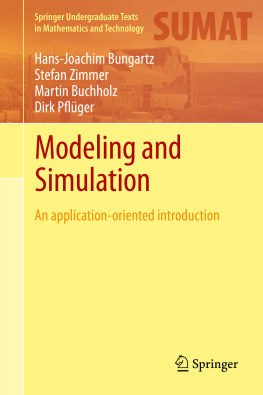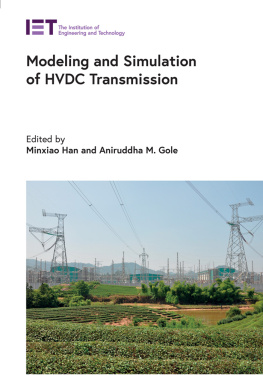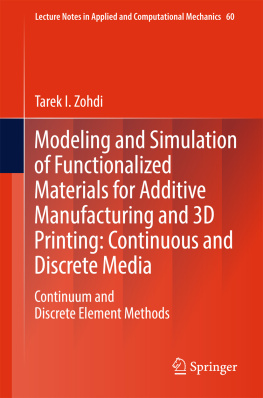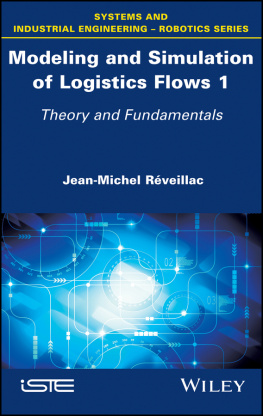Buchholz Martin - Modeling and Simulation An Application-Oriented Introduction
Here you can read online Buchholz Martin - Modeling and Simulation An Application-Oriented Introduction full text of the book (entire story) in english for free. Download pdf and epub, get meaning, cover and reviews about this ebook. City: Berlin;Heidelberg, year: 2016, publisher: Springer, genre: Children. Description of the work, (preface) as well as reviews are available. Best literature library LitArk.com created for fans of good reading and offers a wide selection of genres:
Romance novel
Science fiction
Adventure
Detective
Science
History
Home and family
Prose
Art
Politics
Computer
Non-fiction
Religion
Business
Children
Humor
Choose a favorite category and find really read worthwhile books. Enjoy immersion in the world of imagination, feel the emotions of the characters or learn something new for yourself, make an fascinating discovery.
- Book:Modeling and Simulation An Application-Oriented Introduction
- Author:
- Publisher:Springer
- Genre:
- Year:2016
- City:Berlin;Heidelberg
- Rating:3 / 5
- Favourites:Add to favourites
- Your mark:
- 60
- 1
- 2
- 3
- 4
- 5
Modeling and Simulation An Application-Oriented Introduction: summary, description and annotation
We offer to read an annotation, description, summary or preface (depends on what the author of the book "Modeling and Simulation An Application-Oriented Introduction" wrote himself). If you haven't found the necessary information about the book — write in the comments, we will try to find it.
Modeling and Simulation An Application-Oriented Introduction — read online for free the complete book (whole text) full work
Below is the text of the book, divided by pages. System saving the place of the last page read, allows you to conveniently read the book "Modeling and Simulation An Application-Oriented Introduction" online for free, without having to search again every time where you left off. Put a bookmark, and you can go to the page where you finished reading at any time.
Font size:
Interval:
Bookmark:

- The Modeling : At the very beginning we need a model, i.e., a simplified formal description of a suitable extract from the item of interest, which will then serve as the basis for the subsequent computations.
- The computation or simulation in the tighter sense , resp.: The model will be preprocessed (e.g., discretized) so that it is compatible with a computer platform. The solution of this preprocessed model requires the identification of efficient algorithms.
- The implementation (or more generally the software-development ): The computational algorithms previously determined must be implemented efficiently (with respect to computational time and storage complexities, parallelization issues, etc.) on the target architecture or architectures. Currently, this step significantly exceeds the implementation in the classical sense: It is no longer sufficient to produce runnable code, but software must be designed and developed on a big scale and by every trick in the book.
- The visualisation (or more generally the data exploration ): The data resulting from a simulation run must be interpreted. In some casese.g., for scalar quantities such as the drag coefficient in aero dynamicsthis will be easy, in otherse.g., for highdimensional data setsextracting the relevant information from the flood of numbers is a science of its own.
Font size:
Interval:
Bookmark:
Similar books «Modeling and Simulation An Application-Oriented Introduction»
Look at similar books to Modeling and Simulation An Application-Oriented Introduction. We have selected literature similar in name and meaning in the hope of providing readers with more options to find new, interesting, not yet read works.
Discussion, reviews of the book Modeling and Simulation An Application-Oriented Introduction and just readers' own opinions. Leave your comments, write what you think about the work, its meaning or the main characters. Specify what exactly you liked and what you didn't like, and why you think so.








